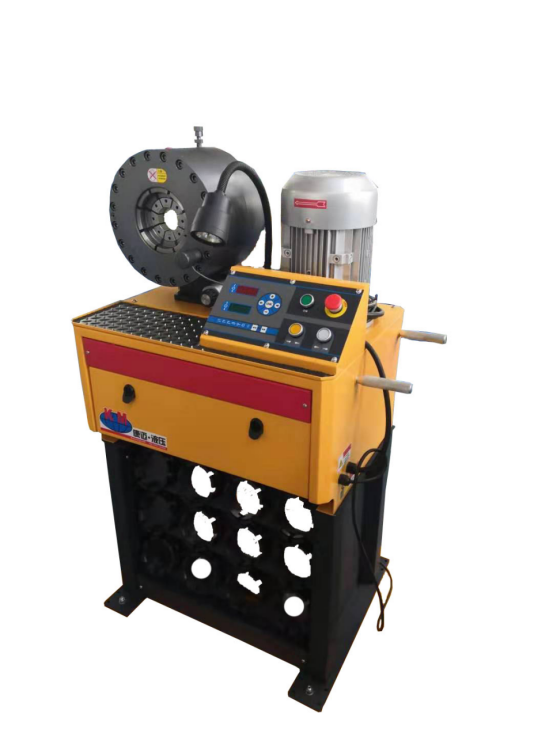335345435
Nov . 09, 2024 05:46 Back to list
High Pressure Fuel Hose Specifications and Safety Guidelines for Efficient Performance
Understanding High-Pressure Fuel Hoses Importance, Applications, and Maintenance
High-pressure fuel hoses are essential components in various industries, particularly in automotive and aerospace applications. These hoses are designed to transport fuel at high pressures while ensuring safety, reliability, and efficiency. Understanding their function, construction, and maintenance is crucial for anyone involved in vehicle maintenance, industrial applications, or fuel system design.
Function and Importance
The primary function of a high-pressure fuel hose is to transport fuel from the tank to the engine at the required pressure. This is vital for efficient fuel atomization and combustion, which directly affects engine performance and emissions. High-pressure fuel hoses are typically found in fuel-injected engines, where precise fuel delivery is crucial for optimal engine operation.
Additionally, these hoses must withstand extreme conditions, including high temperatures, corrosive fuels, and mechanical stress. A failure in a fuel hose can lead to leaks, which can pose serious safety hazards, including fires and explosions. Therefore, the quality and integrity of high-pressure fuel hoses are critical for ensuring both efficiency and safety in fuel delivery systems.
Material and Construction
High-pressure fuel hoses are constructed from durable materials designed to withstand harsh operating conditions. Common materials include reinforced rubber, thermoplastic, and fluoropolymer, providing a balance of flexibility, strength, and chemical resistance. The hose's inner lining is often made from materials resistant to fuel types, including gasoline, diesel, and biofuels.
Reinforcement layers, made from braided fibers such as steel or polyester, provide the necessary strength to withstand high operating pressures, typically ranging from 30 to over 200 psi. Additionally, the outer layer of the hose is designed to protect it from abrasion, UV damage, and other environmental factors.
Applications
fuel hose high pressure

High-pressure fuel hoses are employed in various applications, including
1. Automotive In modern vehicles, high-pressure fuel hoses are essential for fuel injection systems, delivering pressurized fuel to injectors for efficient combustion.
2. Aerospace Aircraft fuel systems utilize high-pressure hoses to ensure reliable and safe fuel delivery at high altitudes and varying temperatures.
3. Industrial Equipment Many industrial machines require high-pressure fuel hoses for their engines, facilitating optimal function and performance.
4. Motorcycles and Marine Applications High-performance motorcycles and marine vessels also rely on these hoses for efficient fuel delivery, ensuring power and speed.
Maintenance and Safety
Given their critical role, regular maintenance and inspection of high-pressure fuel hoses are essential. Signs of wear, such as cracking, swelling, or leaks, should be addressed immediately to prevent potential failures. Replacement should occur every few years or according to manufacturer guidelines, especially for hoses exposed to extreme conditions.
When replacing high-pressure fuel hoses, it's important to use hoses that meet industry standards and specifications. Proper installation is also crucial; hoses should be routed to avoid sharp edges, excessive bending, or contact with hot surfaces.
In conclusion, high-pressure fuel hoses are vital components in various industries, enabling safe and efficient fuel delivery systems. Understanding their construction, applications, and maintenance can enhance performance and safety in any fuel system. Regular inspection and adherence to best practices can prevent failures, ensuring that vehicles and machines operate smoothly and safely. Investing in quality high-pressure fuel hoses is not only a requirement but a commitment to operational efficiency and safety.
-
SAE 100 R17 Black Smooth Cover Hydraulic Hose
NewsMar.07,2025
-
SAE 100 R17 Black Smooth Cover Hydraulic Hose
NewsMar.07,2025
-
SAE 100 R17 Black Smooth Cover Hydraulic Hose
NewsMar.07,2025
-
SAE 100 R17 Black Smooth Cover Hydraulic Hose
NewsMar.07,2025
-
SAE 100 R17 Black Smooth Cover Hydraulic Hose
NewsMar.07,2025
-
steel wire braided hydraulic hose
NewsMar.07,2025



